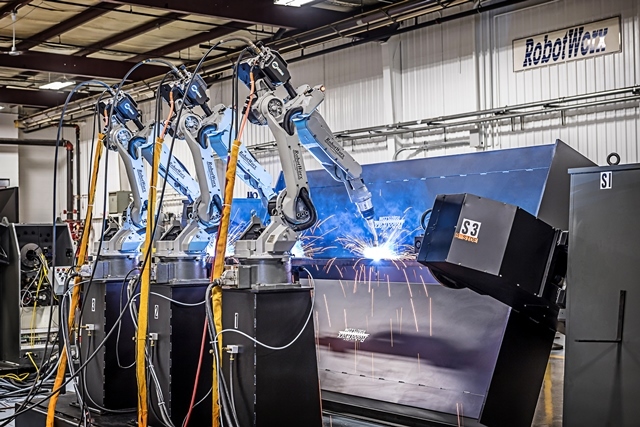Robots Help Return the Age of Productivity
Mar 17, 2016
Industrial robots are bringing back the productivity the economy needs for growth. Robots are being seen on a wide range of production lines across the globe and truly helping to increase throughput and decrease production costs. If you are interested in boosting the productivity on your production line, contact Robots.com experts today.

Global productivity has not had much of any growth nor any hints at a recovery since the millennium…until now. In a paper by John Fernald called “Productivity and Potential Output before, during, and after the Great Recession,” it says that between 1995 and 2005 productivity averaged around 2.9 percent. After that, productivity started it’s slow demise, “average labor productivity growth in mature economies slowed to 0.6 percent in 2014 from 0.8 percent in 2013.” This reported 0.2 percent decrease in labor productivity growth in just one year made Fernald fearful of global stagnation.
While this may not seem like a lot, Tyler Cowen’s recent Foreign Affairs piece, “Is Innovation Over?” reports that it is. “In the medium to long term, even small changes in growth rates have significant consequences for living standards. An economy that grows at one percent doubles its average income approximately every 70 years, whereas an economy that grows at three percent doubles its average income about every 23 years — which, over time, makes a big difference in people’s lives.”
Fortunately, productivity is on the up and up again, which makes Cowen’s logic a beneficial reality. ARK Invest reports that because of “incremental productivity from automation, real GDP per U.S. worker will more than double from $113,000 this past year [2015] to $236,000, compounding at an annualized growth rate of 3.4 percent through 2035, and at an accelerated rate of almost 5 percent from 2025 to 2035. In the absence of automation, productivity would increase at roughly half that rate, or 1.8 percent, and real GDP per worker would reach only $167,000.” In theory, the U.S. would return to the days where each generation provides a better life to the next.
Although robots have been fixtures in factories and warehouses for decades, industrial automation, with the influx of the collaborative-robot revolution is now in a transformation phase of “robot-driven automation.” Some are deeming this the age of “new” productivity. This “new productivity” is helping industrial robots move into a world on track to transform companies around the globe by opening up new opportunities for economic growth and competitiveness by intersecting people, data, and [intelligent] machines. Some may even call robots the next General-Purpose Technology (GPT) that can affect an entire economy and drastically alter societies in a positive way, such as was seen with the steam engine, computer, and internet.
Industrial automation appears to be constantly expanding and evolving into a greater union with information technology that will soon allow robot-driven automation to rein in manufacturing and logistics. All of this data indicates that the return of productivity is headstrong, not a brief blip, and being enabled by perhaps one of the things that was first feared so much, robot-driven automation.
if you are interested in keeping up with the productivity trend, increasing your ROI, and moving towards automation, contact Robots.com, a certified integrator for Fanuc, Motoman, KUKA, Universal Robots, and ABB, at 877−762−6881.
Related Articles
You might be also interested in:

- Featured
Latest Advancements in Material Cutting Robotics
Read about the latest technological advancements in robotic material cutting.

- Featured
Emerging 3D Vision Technologies for Industrial Robots
Learn about the emerging 3D vision technology that businesses are using for industrial robot applications.

- Featured
Most Popular Industrial Robotic Applications for 2021 and Projections
Explore the most popular application trends of 2021 and what to expect in the future.
Let's talk!
Request your quick quote today.
